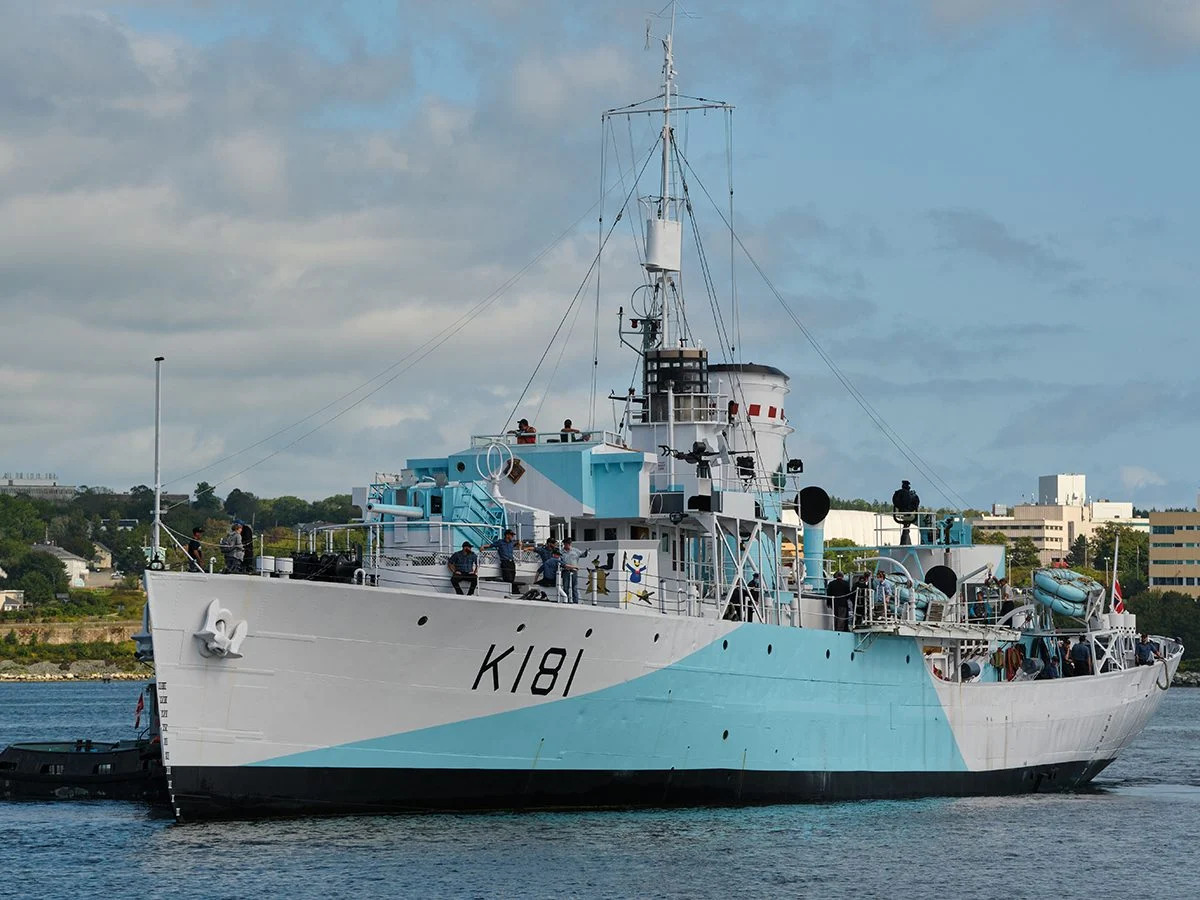|


256-bit encryption
$500,000 protection

|
HMCS SACKVILLE model

HMCS Sackville is a Flower-class corvette that served in
the Royal Canadian Navy and later served as a civilian
research vessel. Sackville's keel was laid down in early
1940. She was launched on 15 May 1941. She is now a
museum ship located in Halifax, Nova Scotia.
In August 1942, HMCS Sackville fought a series of fierce
actions escorting Convoy ON-115. Deprived of air cover
by heavy fog, the convoy was attacked by two successive
U-boat "wolfpacks" off the coast of Newfoundland. On
August 3, Sackville caught the German submarine U-43 on
the surface and, as the submarine dived, made a series
of depth charge attacks which badly damaged the
submarine. U-43 had to retreat to France for repairs
with serious damage to its engines, compressors, a
leaking hatch. The next day HMCS
Sackville attacked U-704 as it dived, causing the
submarine to break off its attack leaving Sackville to
rescue survivors from an abandoned merchant ship. Only a
few hours later, HMCS Sackville detected U-552 on the
surface with radar and landed a four-inch shell on the
submarine's conning tower and continued with a depth
charge. U-552 nearly sank and crept back to Germany
heavily damaged. Sackville's attacks had played a key
role in allowing the 41 ship convoy to escape with the
loss of only two ships.
In 1988,
HMCS Sackville was
designated a National Historic Site of Canada. In 1998,
Canada Post issued a 45¢ stamp featuring HMCS Sackville
as part of the Naval Vessels series. In the 2020 film
Greyhound, Sackville was used as the model for the
corvette HMCS Dodge. The producers of the movie took
numerous 3D scans of the ship's exterior to create the
CGI version for the movie.

We build this primarily wood
Flower class HMCS
Sackville model
in three sizes:
25" long (1/100 scale), 32" long, and 48" long.
Contact us for quotes and lead time.
Go here to
learn about authentic
warship
models.
Learn more about the
HMCS
Sackville here:
https://en.wikipedia.org/wiki/HMCS_Sackville
|